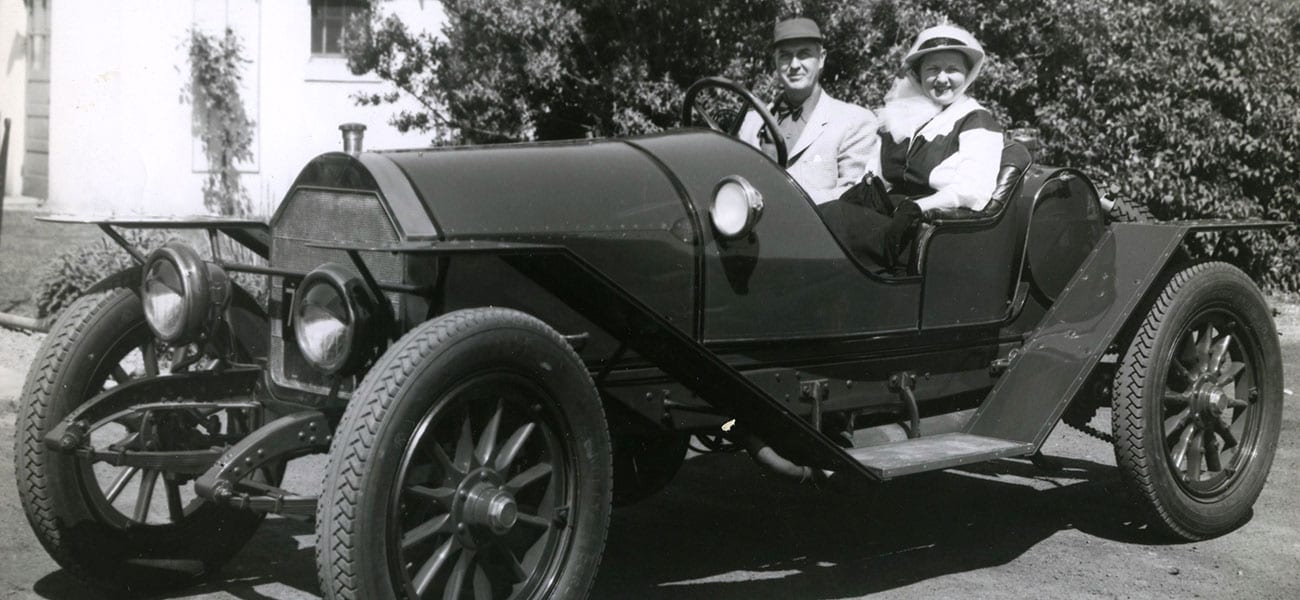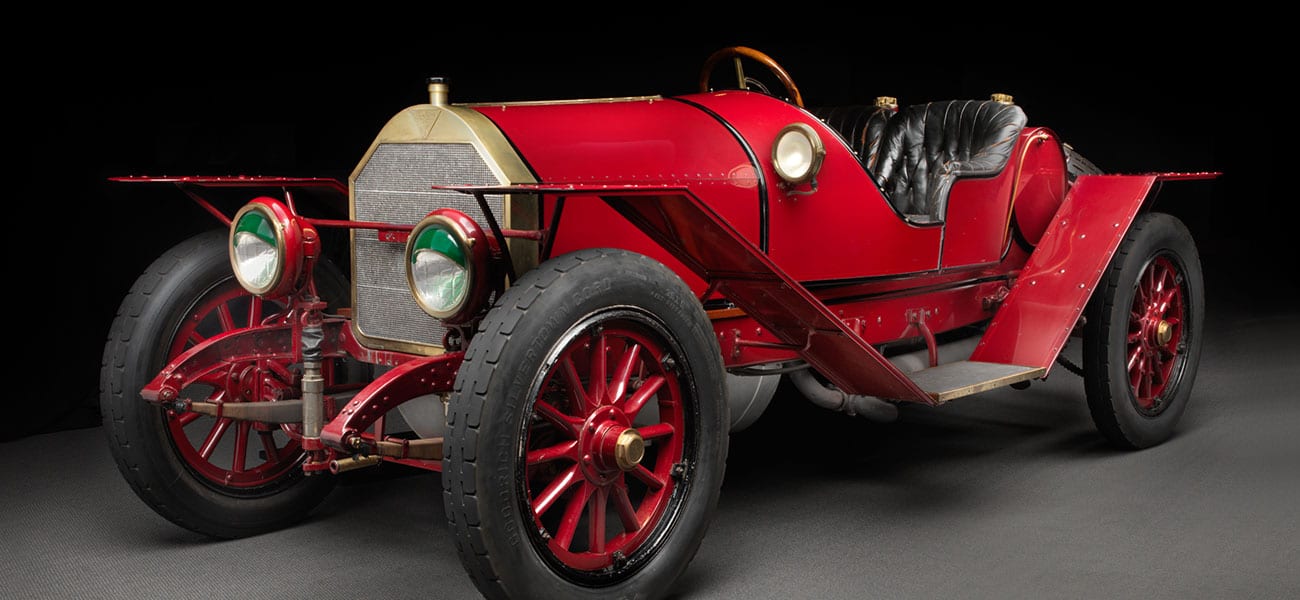Tech Specs
Four-cylinder in-line engine, T-head, 597 cubic inches, 60 hp at 1200 rpm.
Before/After
1914 Simplex


About the 1914 Simplex Model 50 H.P. “Speed-Car”
“The first product of an American factory worthy of the name of an American car” was the statement which introduced the Simplex in 1904, somewhat extravagantly (although not without cause) and amusingly (because Simplex was, not coincidentally, also the model designation of the latest Mercedes). Since ruinous customs duty had made selling the German car financially unrewarding, the Mercedes importers in New York City had decided to produce a top-quality car themselves. They succeeded.
There was no more stalwart car in the United States. Inspiration notwithstanding, the Simplex was all-American, specifically and robustly built for fast travel over the abominable U.S. roads of the period. Seventy-five miles an hour was easy for a Simplex, and its stamina was demonstrated in 1908 when a 50 H.P. Speed Car finished a full 70 miles ahead of its nearest competitor in a 24-hour marathon at Brighton Beach in Brooklyn. The 1177 miles the car completed was a new world record for a day on the track.
Although Simplexes were sold in models ranging from 30 to 90 horsepower, the 50 H.P. was the most popular. About 250 were sold in the decade of their manufacture. Initially a factory on Manhattan’s Upper East Side was used, but in late 1913 a change of ownership moved the company across the Hudson to New Brunswick, New Jersey. Following America’s entrance into World War 1, the New Jersey factory was acquired by Wright-Martin for Hispano-Suiza aero engine production. That effectively finished Simplex. Manufacture did not resume after the Armistice.
Like most low-production, high-priced automobiles of the prewar era, the Simplex was sold as a chassis only. The 50 H.P. price in 1914 was a daunting $4,500. Runabout bodies began at $500 that year, but this one – replicated by Briggs Cunningham from company catalogues – would have been much more expensive because of its diverse “options”, including visors over the headlamps designed to curtail the glare of nighttime driving. The man from whom Briggs Cunningham bought this car, incidentally, was Barron G. Collier, grandfather of Miles Collier and founder of Collier County, in which this museum is located.
















